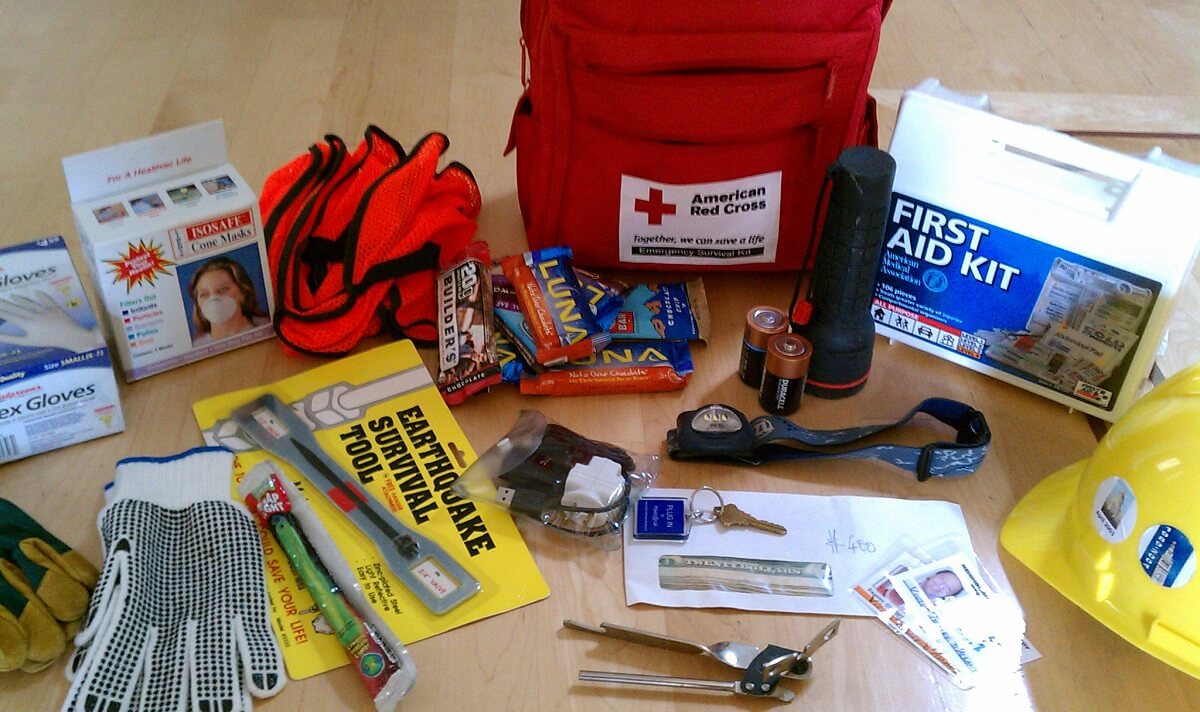Emergencies, by their very definition, are stressful.
I, like many homesteaders, find myself concerned about the possibility of an emergency event such as a natural disaster, a disease outbreak, or an act of terrorism.
Do you too, wonder if you have done all you can to help prepare for a catastrophic survival situation? Panic and confusion are natural responses to an emergency. Being prepared—both physically and mentally—can help you stay calm, collected, and able to promptly respond to a life-threatening event.
Make A Family Readiness Plan
You can take several actionable steps to prepare beforehand to protect the health, safety, and well-being of yourself and your loved ones.
- Have a family meeting, requesting everyone’s input in crafting a homestead readiness plan. Determine how you will communicate with loved ones. Discuss the particular steps you will have to take in different emergency scenarios.
- You and your loved ones may be apart when disaster strikes. You should have a plan so that you all know how to best contact one another. Phone circuits in the affected emergency area may be overwhelmed with calls. It is often easier to make contact with a relative or friend in another state than it is to contact someone in the immediate area.
- Know the location of the two closest emergency shelters to your homestead. Practice driving alternate routes to reach the facilities. If you have pets, make sure to know which emergency shelters are equipped to provide shelter for your animals.
- Choose an out-of-town relative or friend as a connection. Make sure that all family members memorize the number: often a text will go through, even though a phone call will not. Confirm that all family members have emergency contact information programmed into their cell phones. Include numbers for ambulance services, police, fire department, and nearby hospitals.
In order to prepare a family disaster plan, everyone in the household must know the types of emergencies that are most likely to occur in your area and the correct way to respond.

As an example, if tornadoes are common in your part of the country, it is essential that children and the elderly know the warning signs and the best place in the home to take shelter.
Since disaster can strike anywhere, anytime, make sure everyone in the household knows how to respond should an event occur while the family is separated, away at school, work, or play.
Preparing For Evacuation
If ordered to evacuate, are you ready to depart immediately? Have a backpack survival kit—also known as a go bag—packed and ready for every family member with enough food, medicine, warm clothing, and water to last a minimum of four days.

Remember to include identification, contact information, a survival blanket, toilet tissue, and a flashlight in each family member’s kit.
- Consider keeping an extra set of keys in a hidden, accessible location on each vehicle as well as additional sets secured in a hidden location in the home.
- If you own family pets, have crates, leashes, water, and pet food packed and ready. The majority of emergency shelters will not accept pets that do not have a crate, blanket, food, and feeding and sanitary supplies to bring to the shelter with them.
- Stow an additional repair kit, water, first-aid kit, and necessary survival gear stowed in every family vehicle. If sheltering in place, the homestead should be well-stocked. That means you have survival supplies to last for up to two weeks or longer.
- Keep a blanket, extra clothing, a water-filter, and a survival manual for each family vehicle.
- If you or a family is dependent on medication, be sure to have an extra supply in your kit as well as a copy of pertinent medical records and prescriptions.
Self-Reliance
The concept of homesteading is built upon self-reliance. When disaster strikes, emergency services may be unavailable, mass communication may fail, and power outages prevail.
Do you know how to set up an emergency shelter or purify water? And better yet, do you have the diverse array of skills required to live off-grid? If not, books, videos, and survival courses are available online or at your local library.
Become knowledgeable in basic survival skills and first aid procedures. You can’t help if you don’t have the training and life skills to do so. The Red Cross and local agencies offer CPR and first-responder training.

When an accident happens or disaster strikes, you need to take immediate action. The life you save may be your own: you cannot respond if you can’t remember what to do. If you do not study and practice survival and medical response skills, you may not remember the many things that must be done quickly.
Make sure that everyone in the household knows their assigned responsibilities in an emergency situation and practice how you will work together as a team.
It’s important that every family member knows where the main homestead shut-offs are located for water, electric, and gas. If a tool is required to shut off propane or natural gas, tie it to the shut-off valve.
Water Everywhere And Not A Drop To Drink
During a weather event or natural disaster, one can get by without a lot of things we take for granted daily. Water isn’t one of them. Every living thing needs water to survive.
To make sure you are prepared for an emergency, keep in mind that you will need 1 gallon of water per person, per day until water supplies are restored. An active person requires a minimum of a half a gallon of drinking water daily. Pregnant women, small children, and persons with health challenges require more.

Don’t forget the family pets. Dogs and cats will need to drink about a third of a gallon of water each, per day. Water is also required for cooking and personal hygiene.
It’s a wise idea is to stockpile gallons of bottled water now: when disaster looms, stores may be sold out of water. Water can also be safely stored in sealable, food-grade 5-gallon plastic buckets. If you have advanced warning of an approaching storm, fill sinks and the bathtub with water.
Batten Down The Hatches
It’s not the time to try to go out and buy plywood and sandbags when a hurricane is bearing down. Lumberyards and home and garden centers will likely be inundated with harried shoppers, and hurricane prep supplies are often in short supply or non-existent.
Savvy homesteaders suggest having plywood panels cut to size, numbered for ease of installation, and stored away, ready to deploy when fierce winds and inclement weather threatens.

Store important paperwork and documentation you may need to access in an emergency in one place. A portable, metal, fireproof, waterproof case works best.
The last thing you want is to realize you’re missing an important survival necessity once its too late. Take a look at our list to make sure you have everything you need.
Survival Necessities
- Emergency portable radio
- Extra batteries
- Flashlights
- Signal whistle
- Signal mirror
- Duct tape,
- Portable generator
- Fuel
- Waterproof matches
- Compass
- Manual can opener
- Knife
- Rope
- Heavy-duty plastic sheeting
- Tarps
If you cannot function without prescription eyeglasses, keep an inexpensive, extra pair in your survival kit.
Be aware of elderly or ill family members, friends, or neighbors that may need a hand during an emergency. Be prepared to check on their wellbeing and make sure you have enough supplies that you can offer water, food, and shelter to a neighbor in need.
Livestock
Should you need to evacuate your homestead, you may have livestock that you cannot take with you. During an emergency situation, it may be several days before you are allowed to return to your property. In preparation for a weather event, make sure that all stock tanks are full and food is available.
Before disaster strikes, know the locations in your county that are set up to shelter livestock and familiarize yourself with the requirements for their care.
References
- Make A Plan, Red Cross
- Disaster Readiness, Ready
- Plan And Prepare, FEMA
- Preparing My Family For A Disaster, Homeland Security










































Leave a Reply